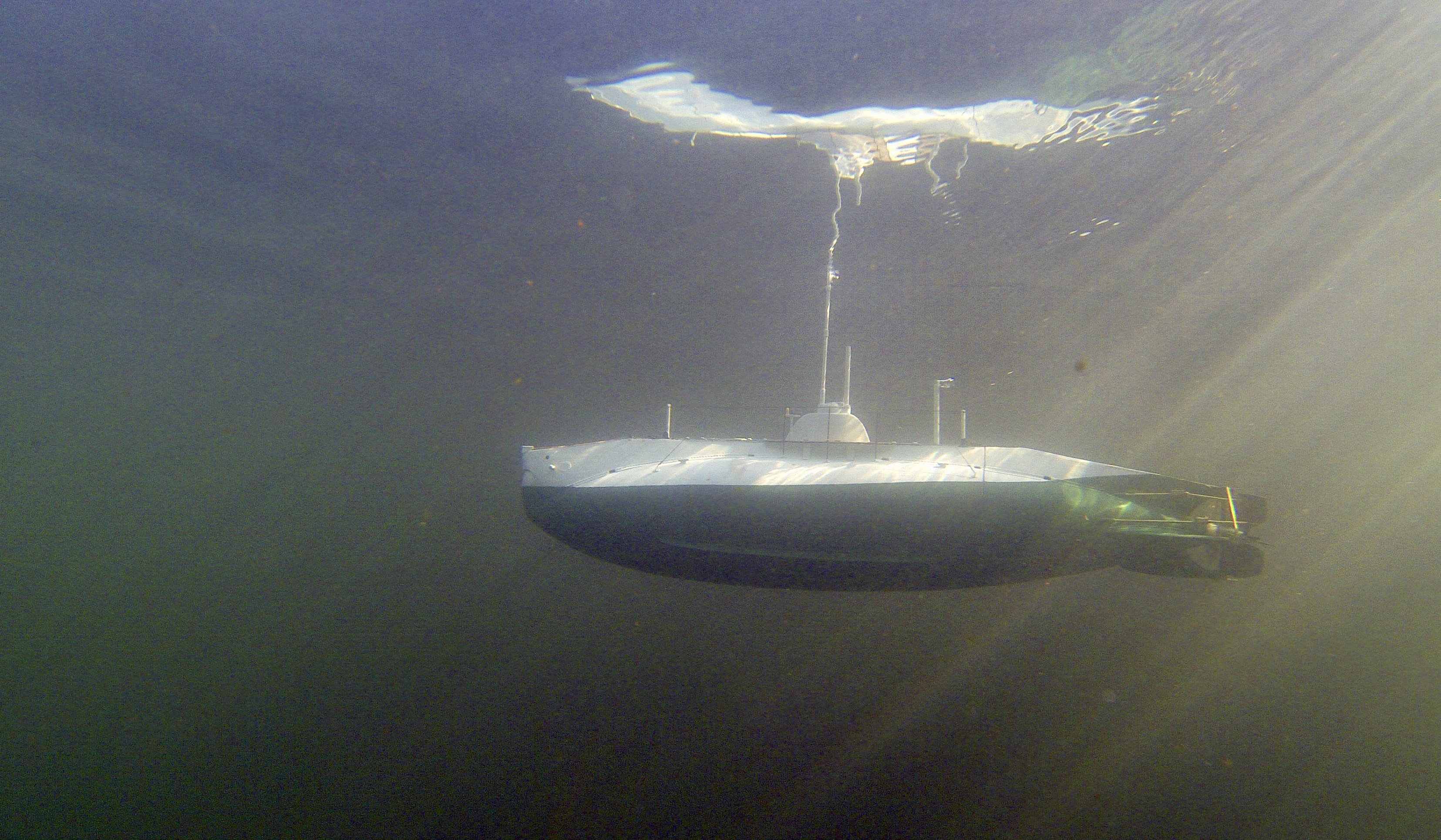Supplies of the Ship Modeler's Handbook are running out. Get your copy NOW before they are gone! Click on photo to order.
×
-
Posts
213 -
Joined
-
Last visited
Reputation Activity
-
 FreekS reacted to Valeriy V in Varyag 1901 by Valeriy V - FINISHED - scale 1:75 - Russian Cruiser
FreekS reacted to Valeriy V in Varyag 1901 by Valeriy V - FINISHED - scale 1:75 - Russian Cruiser
My goal is getting closer...
-
 FreekS reacted to Valeriy V in Varyag 1901 by Valeriy V - FINISHED - scale 1:75 - Russian Cruiser
FreekS reacted to Valeriy V in Varyag 1901 by Valeriy V - FINISHED - scale 1:75 - Russian Cruiser
Phil, this license is for 9mm.
And if you have 11 barrels with a caliber of 152 mm, then there will be very few people who want to ask you for a license.
-
 FreekS reacted to Valeriy V in Varyag 1901 by Valeriy V - FINISHED - scale 1:75 - Russian Cruiser
FreekS reacted to Valeriy V in Varyag 1901 by Valeriy V - FINISHED - scale 1:75 - Russian Cruiser
Thank you all for your likes and comments. I am glad that my work is of interest and may be useful to someone.
Group photo of guns.
-
 FreekS got a reaction from Bildad in Corsaro 2 by FreekS - FINISHED - Corel - 1:24 - RADIO
FreekS got a reaction from Bildad in Corsaro 2 by FreekS - FINISHED - Corel - 1:24 - RADIO
Today there was some wind at my model sailing club in Netherlands. Not very much and the trees make voor quite variable wind, but I managed to get half an hour of relaxed sailing, learning how the boat reacts. Happy with the result!
-
 FreekS got a reaction from KeithAug in Auguste Piccard by FreekS - FINISHED - 1:25 - RADIO - Swiss passenger mesoscaphe built for 1964 World Fair
FreekS got a reaction from KeithAug in Auguste Piccard by FreekS - FINISHED - 1:25 - RADIO - Swiss passenger mesoscaphe built for 1964 World Fair
FullSizeRender.MOV Finally the chance for some serious testing, spent a few hours in a pool in Lichtenstein. Found a quiet spot to practice dives….. I think I need to move about 10 gram ballast from aft to bow (Kind off one passenger walking inside..). More testing tomorrow, followed by a 10 hour drive home…. IMG_0571.MOV FullSizeRender.MOV -
 FreekS got a reaction from Maxx Brodeur in Corsaro 2 by FreekS - FINISHED - Corel - 1:24 - RADIO
FreekS got a reaction from Maxx Brodeur in Corsaro 2 by FreekS - FINISHED - Corel - 1:24 - RADIO
Hi all, thanks for the likes and comments on my project - it’s getting interesting now as the kit contains many nice details, but these add weight on top as well as provide the chance for the sheets to tangle while sailing.
First test in a bath showed that the boat is watertight, but very unstable. There was of course no ballast in the keel and the motors and battery, while at the lowest point, don’t counterbalance the masts.
I had counted with this, and the keel contains 2 M4 threads to provide the boat with a n extra build keel.
I printed the keel and filled it with 1.2 kg of lead (the boat is 1.8kg). The bulb is mounted 30 cm under the waterline and the boat is reasonably stable - I had to add another 165gram lead forward of the main mast to bring the boat level and on the waterline. We will see what happens with sails and wind….
-
 FreekS got a reaction from GrandpaPhil in Auguste Piccard by FreekS - FINISHED - 1:25 - RADIO - Swiss passenger mesoscaphe built for 1964 World Fair
FreekS got a reaction from GrandpaPhil in Auguste Piccard by FreekS - FINISHED - 1:25 - RADIO - Swiss passenger mesoscaphe built for 1964 World Fair
FullSizeRender.MOV Finally the chance for some serious testing, spent a few hours in a pool in Lichtenstein. Found a quiet spot to practice dives….. I think I need to move about 10 gram ballast from aft to bow (Kind off one passenger walking inside..). More testing tomorrow, followed by a 10 hour drive home…. IMG_0571.MOV FullSizeRender.MOV -
 FreekS got a reaction from Harvey Golden in Auguste Piccard by FreekS - FINISHED - 1:25 - RADIO - Swiss passenger mesoscaphe built for 1964 World Fair
FreekS got a reaction from Harvey Golden in Auguste Piccard by FreekS - FINISHED - 1:25 - RADIO - Swiss passenger mesoscaphe built for 1964 World Fair
yes my testing also was in a shallow lake, and while submerged - a large “smoke-trail” was following the model as it scraped through the mud. Not good for the nerves! Here’s the boat in that same lake at dusk - good to see the effect of the LED strips I spent so much time waterproofing and building an arduino controller for!
thanks for all the likes!
-
 FreekS got a reaction from yvesvidal in Auguste Piccard by FreekS - FINISHED - 1:25 - RADIO - Swiss passenger mesoscaphe built for 1964 World Fair
FreekS got a reaction from yvesvidal in Auguste Piccard by FreekS - FINISHED - 1:25 - RADIO - Swiss passenger mesoscaphe built for 1964 World Fair
FullSizeRender.MOV Finally the chance for some serious testing, spent a few hours in a pool in Lichtenstein. Found a quiet spot to practice dives….. I think I need to move about 10 gram ballast from aft to bow (Kind off one passenger walking inside..). More testing tomorrow, followed by a 10 hour drive home…. IMG_0571.MOV FullSizeRender.MOV -
 FreekS got a reaction from G.L. in Auguste Piccard by FreekS - FINISHED - 1:25 - RADIO - Swiss passenger mesoscaphe built for 1964 World Fair
FreekS got a reaction from G.L. in Auguste Piccard by FreekS - FINISHED - 1:25 - RADIO - Swiss passenger mesoscaphe built for 1964 World Fair
FullSizeRender.MOV Finally the chance for some serious testing, spent a few hours in a pool in Lichtenstein. Found a quiet spot to practice dives….. I think I need to move about 10 gram ballast from aft to bow (Kind off one passenger walking inside..). More testing tomorrow, followed by a 10 hour drive home…. IMG_0571.MOV FullSizeRender.MOV -
 FreekS reacted to Valeriy V in Varyag 1901 by Valeriy V - FINISHED - scale 1:75 - Russian Cruiser
FreekS reacted to Valeriy V in Varyag 1901 by Valeriy V - FINISHED - scale 1:75 - Russian Cruiser
Thanks everyone!
I am very pleased that my work is interesting and causes so many positive emotions!
This means that my efforts in the field of photography are not in vain.
I've finished assembling steam boats.
-
 FreekS got a reaction from Reggiemon in Corsaro 2 by FreekS - FINISHED - Corel - 1:24 - RADIO
FreekS got a reaction from Reggiemon in Corsaro 2 by FreekS - FINISHED - Corel - 1:24 - RADIO
Today there was some wind at my model sailing club in Netherlands. Not very much and the trees make voor quite variable wind, but I managed to get half an hour of relaxed sailing, learning how the boat reacts. Happy with the result!
-
 FreekS got a reaction from mtdoramike in Corsaro 2 by FreekS - FINISHED - Corel - 1:24 - RADIO
FreekS got a reaction from mtdoramike in Corsaro 2 by FreekS - FINISHED - Corel - 1:24 - RADIO
Today there was some wind at my model sailing club in Netherlands. Not very much and the trees make voor quite variable wind, but I managed to get half an hour of relaxed sailing, learning how the boat reacts. Happy with the result!
-
 FreekS got a reaction from ccoyle in Corsaro 2 by FreekS - FINISHED - Corel - 1:24 - RADIO
FreekS got a reaction from ccoyle in Corsaro 2 by FreekS - FINISHED - Corel - 1:24 - RADIO
Now, where was I?
oh yes, sail making.
the mainsail came out reasonably well for a first time user of the showing machine (might be too much tension on the thread in the sowing machine).
Played around with a fan in my workshop to set the sheet lengths and servo settings on the transmitter.
Then brought it to my model sailing club for a first spin - at sunset and in near windless conditions. When she did catch a breeze she moved quickly and heeled a bit.
Next attempt was in a quiet arm of a local river in similar light conditions. Pics taken from a movie so resolution is not well. As usual need to do some repairs but I’m reasonably happy. Cleaning the hull is also needed!
I think I’m going to consider Corsaro-2 finished - apart from testing with more wind and the consequences that may have. I deepen the bulb for stability for example.
-
 FreekS got a reaction from mtaylor in Corsaro 2 by FreekS - FINISHED - Corel - 1:24 - RADIO
FreekS got a reaction from mtaylor in Corsaro 2 by FreekS - FINISHED - Corel - 1:24 - RADIO
Today there was some wind at my model sailing club in Netherlands. Not very much and the trees make voor quite variable wind, but I managed to get half an hour of relaxed sailing, learning how the boat reacts. Happy with the result!
-
 FreekS got a reaction from aechmea in Sailboat/ferry for Dutch fortress c. 1914 by FreekS - approx. 1:5 - RADIO
FreekS got a reaction from aechmea in Sailboat/ferry for Dutch fortress c. 1914 by FreekS - approx. 1:5 - RADIO
Ok the boat did get wet today and I got a few pictures!
I had a 1.2 kg lead bulb as „fake keel“ in addition to the daggerboard and rudder. Total weight was 2,5 kg and it seemed to give reasonable stability.
The technical installations (two small winches, a rudder servo, battery and receiver) were inside a “fake ammunition chest” in the centre of the boat.
A small amount of water came into the boat but nothing to worry about.
However the sheets got hung up the first time the winches pulled them in and pulled the tensioning springs of the sheets apart. Learned something - and apart from a pair of springs no damage done.
But as a result I could not let the boat go - just had it drift around in the harbour where still the wind would occasionally move it nicely. Look forward to the next attempt. Might reduce keel ballast weight a bit.
-
 FreekS got a reaction from GrandpaPhil in Sailboat/ferry for Dutch fortress c. 1914 by FreekS - approx. 1:5 - RADIO
FreekS got a reaction from GrandpaPhil in Sailboat/ferry for Dutch fortress c. 1914 by FreekS - approx. 1:5 - RADIO
Ok the boat did get wet today and I got a few pictures!
I had a 1.2 kg lead bulb as „fake keel“ in addition to the daggerboard and rudder. Total weight was 2,5 kg and it seemed to give reasonable stability.
The technical installations (two small winches, a rudder servo, battery and receiver) were inside a “fake ammunition chest” in the centre of the boat.
A small amount of water came into the boat but nothing to worry about.
However the sheets got hung up the first time the winches pulled them in and pulled the tensioning springs of the sheets apart. Learned something - and apart from a pair of springs no damage done.
But as a result I could not let the boat go - just had it drift around in the harbour where still the wind would occasionally move it nicely. Look forward to the next attempt. Might reduce keel ballast weight a bit.
-
 FreekS got a reaction from Christhomas in Sailboat/ferry for Dutch fortress c. 1914 by FreekS - approx. 1:5 - RADIO
FreekS got a reaction from Christhomas in Sailboat/ferry for Dutch fortress c. 1914 by FreekS - approx. 1:5 - RADIO
Ok the boat did get wet today and I got a few pictures!
I had a 1.2 kg lead bulb as „fake keel“ in addition to the daggerboard and rudder. Total weight was 2,5 kg and it seemed to give reasonable stability.
The technical installations (two small winches, a rudder servo, battery and receiver) were inside a “fake ammunition chest” in the centre of the boat.
A small amount of water came into the boat but nothing to worry about.
However the sheets got hung up the first time the winches pulled them in and pulled the tensioning springs of the sheets apart. Learned something - and apart from a pair of springs no damage done.
But as a result I could not let the boat go - just had it drift around in the harbour where still the wind would occasionally move it nicely. Look forward to the next attempt. Might reduce keel ballast weight a bit.
-
 FreekS got a reaction from Harvey Golden in Sailboat/ferry for Dutch fortress c. 1914 by FreekS - approx. 1:5 - RADIO
FreekS got a reaction from Harvey Golden in Sailboat/ferry for Dutch fortress c. 1914 by FreekS - approx. 1:5 - RADIO
Ok the boat did get wet today and I got a few pictures!
I had a 1.2 kg lead bulb as „fake keel“ in addition to the daggerboard and rudder. Total weight was 2,5 kg and it seemed to give reasonable stability.
The technical installations (two small winches, a rudder servo, battery and receiver) were inside a “fake ammunition chest” in the centre of the boat.
A small amount of water came into the boat but nothing to worry about.
However the sheets got hung up the first time the winches pulled them in and pulled the tensioning springs of the sheets apart. Learned something - and apart from a pair of springs no damage done.
But as a result I could not let the boat go - just had it drift around in the harbour where still the wind would occasionally move it nicely. Look forward to the next attempt. Might reduce keel ballast weight a bit.
-
 FreekS got a reaction from mtaylor in Sailboat/ferry for Dutch fortress c. 1914 by FreekS - approx. 1:5 - RADIO
FreekS got a reaction from mtaylor in Sailboat/ferry for Dutch fortress c. 1914 by FreekS - approx. 1:5 - RADIO
Ok the boat did get wet today and I got a few pictures!
I had a 1.2 kg lead bulb as „fake keel“ in addition to the daggerboard and rudder. Total weight was 2,5 kg and it seemed to give reasonable stability.
The technical installations (two small winches, a rudder servo, battery and receiver) were inside a “fake ammunition chest” in the centre of the boat.
A small amount of water came into the boat but nothing to worry about.
However the sheets got hung up the first time the winches pulled them in and pulled the tensioning springs of the sheets apart. Learned something - and apart from a pair of springs no damage done.
But as a result I could not let the boat go - just had it drift around in the harbour where still the wind would occasionally move it nicely. Look forward to the next attempt. Might reduce keel ballast weight a bit.
-
 FreekS got a reaction from aechmea in Sailboat/ferry for Dutch fortress c. 1914 by FreekS - approx. 1:5 - RADIO
FreekS got a reaction from aechmea in Sailboat/ferry for Dutch fortress c. 1914 by FreekS - approx. 1:5 - RADIO
Here is an aerial photo of the fort - part of the “stelling Amsterdam” (now a Unesco world heritage site). That would be the canal/river that my grandfather would have sailed on. Good place for wind - no currents, might get choppy but no long swells.
The hull is complete and painted in the main colours the army would have available in 1914 (green and black).
I cannot discern any standing rigging on the one picture I have, and for ease of taking the masts and sails off for transport I decided to forego it. The Carbon masts are stiff enough without it. One mast has a cross brace for a Latin sail, the other will get one plus a boom for another Latin sail.
belaying pins hold the running rigging, which secures the mast while sailing, and the three “daggerboards” built can be secured in their housings with messing pins.
winches, rudderservo, receiver and sail material have arrived for the next steps.
-
 FreekS got a reaction from Harvey Golden in Sailboat/ferry for Dutch fortress c. 1914 by FreekS - approx. 1:5 - RADIO
FreekS got a reaction from Harvey Golden in Sailboat/ferry for Dutch fortress c. 1914 by FreekS - approx. 1:5 - RADIO
Here is an aerial photo of the fort - part of the “stelling Amsterdam” (now a Unesco world heritage site). That would be the canal/river that my grandfather would have sailed on. Good place for wind - no currents, might get choppy but no long swells.
The hull is complete and painted in the main colours the army would have available in 1914 (green and black).
I cannot discern any standing rigging on the one picture I have, and for ease of taking the masts and sails off for transport I decided to forego it. The Carbon masts are stiff enough without it. One mast has a cross brace for a Latin sail, the other will get one plus a boom for another Latin sail.
belaying pins hold the running rigging, which secures the mast while sailing, and the three “daggerboards” built can be secured in their housings with messing pins.
winches, rudderservo, receiver and sail material have arrived for the next steps.
-
 FreekS got a reaction from GrandpaPhil in Sailboat/ferry for Dutch fortress c. 1914 by FreekS - approx. 1:5 - RADIO
FreekS got a reaction from GrandpaPhil in Sailboat/ferry for Dutch fortress c. 1914 by FreekS - approx. 1:5 - RADIO
Here is an aerial photo of the fort - part of the “stelling Amsterdam” (now a Unesco world heritage site). That would be the canal/river that my grandfather would have sailed on. Good place for wind - no currents, might get choppy but no long swells.
The hull is complete and painted in the main colours the army would have available in 1914 (green and black).
I cannot discern any standing rigging on the one picture I have, and for ease of taking the masts and sails off for transport I decided to forego it. The Carbon masts are stiff enough without it. One mast has a cross brace for a Latin sail, the other will get one plus a boom for another Latin sail.
belaying pins hold the running rigging, which secures the mast while sailing, and the three “daggerboards” built can be secured in their housings with messing pins.
winches, rudderservo, receiver and sail material have arrived for the next steps.
-
 FreekS got a reaction from KeithAug in Sailboat/ferry for Dutch fortress c. 1914 by FreekS - approx. 1:5 - RADIO
FreekS got a reaction from KeithAug in Sailboat/ferry for Dutch fortress c. 1914 by FreekS - approx. 1:5 - RADIO
Here is an aerial photo of the fort - part of the “stelling Amsterdam” (now a Unesco world heritage site). That would be the canal/river that my grandfather would have sailed on. Good place for wind - no currents, might get choppy but no long swells.
The hull is complete and painted in the main colours the army would have available in 1914 (green and black).
I cannot discern any standing rigging on the one picture I have, and for ease of taking the masts and sails off for transport I decided to forego it. The Carbon masts are stiff enough without it. One mast has a cross brace for a Latin sail, the other will get one plus a boom for another Latin sail.
belaying pins hold the running rigging, which secures the mast while sailing, and the three “daggerboards” built can be secured in their housings with messing pins.
winches, rudderservo, receiver and sail material have arrived for the next steps.
-
 FreekS reacted to Valeriy V in Varyag 1901 by Valeriy V - FINISHED - scale 1:75 - Russian Cruiser
FreekS reacted to Valeriy V in Varyag 1901 by Valeriy V - FINISHED - scale 1:75 - Russian Cruiser
This is what the model looks like after installing the davits.










